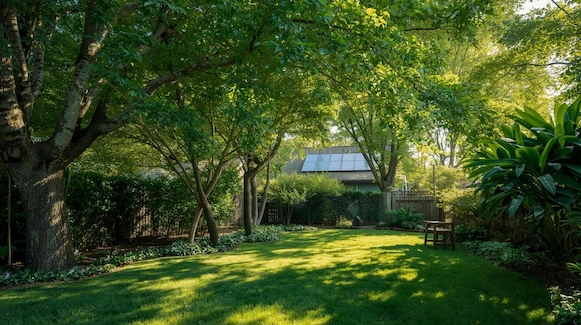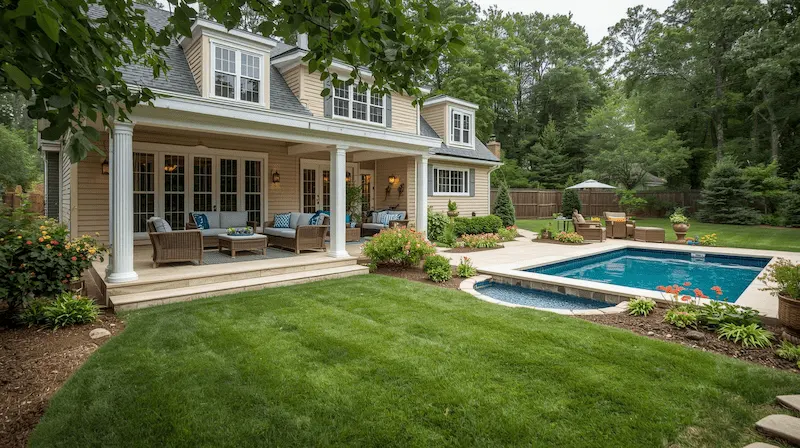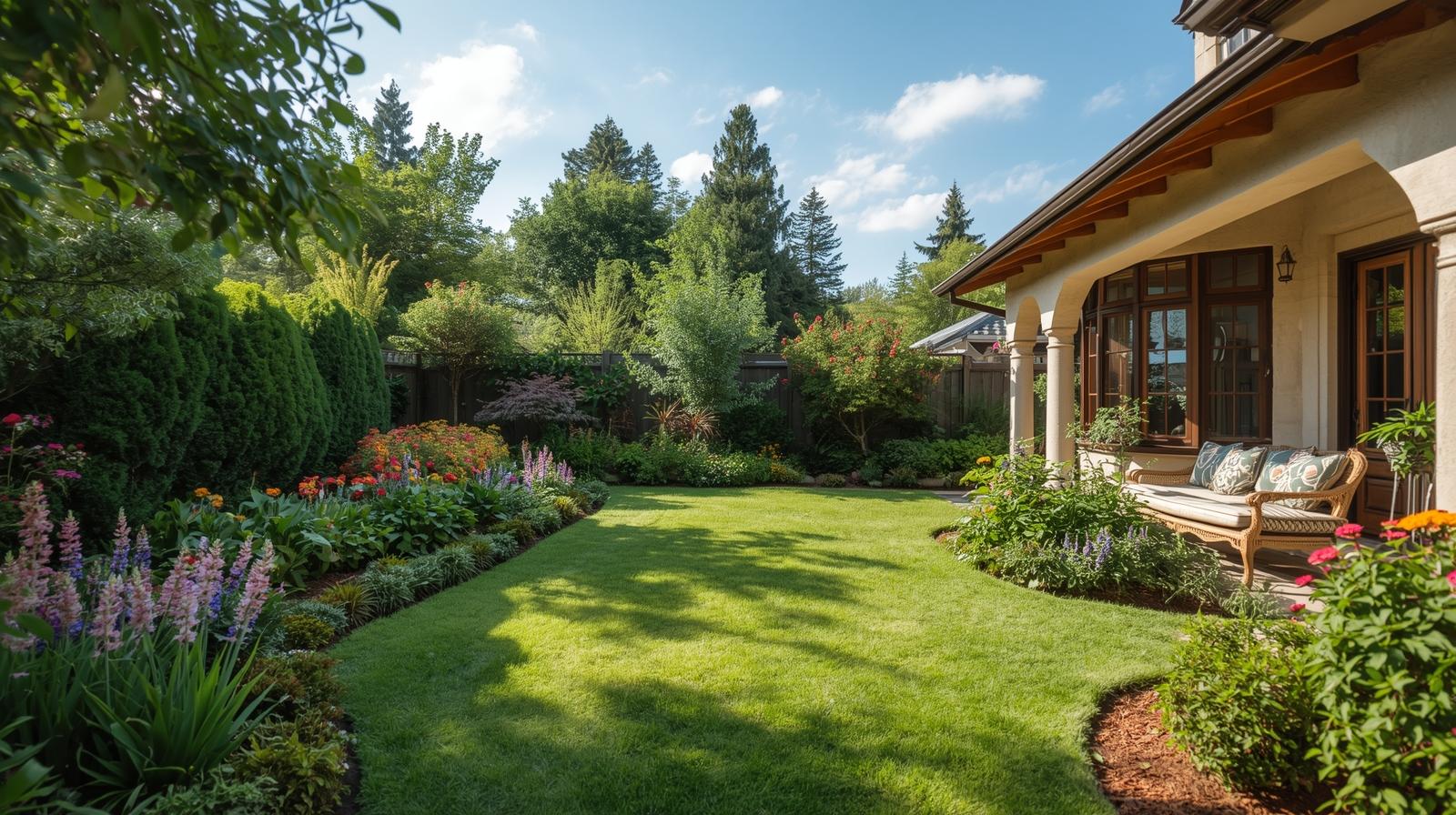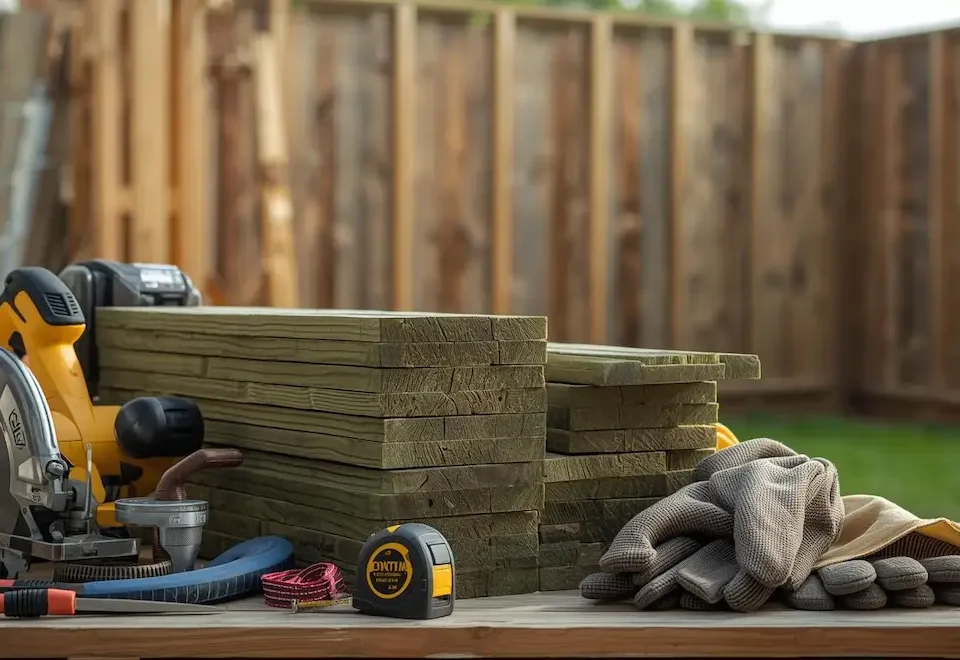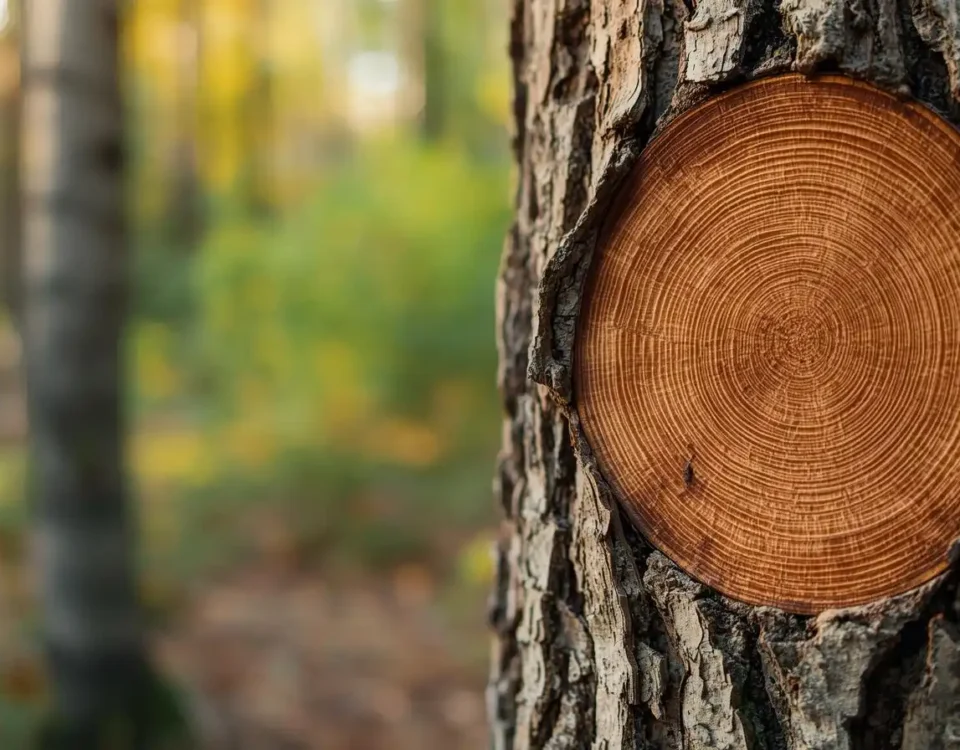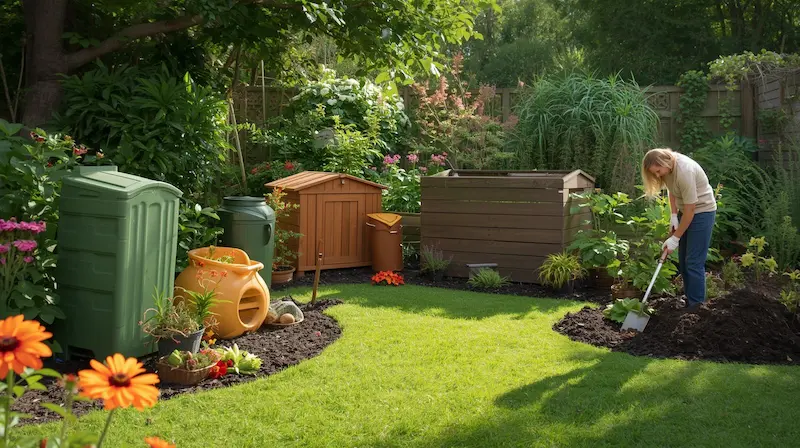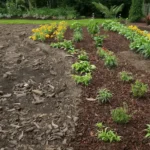
Bare Ground to Beautiful: Essential Plants, Mulch & Easy Gardening
September 2, 2025
Best Fabric & Upholstery Protectors 2025: Stain Tests & Reviews
September 4, 2025Are you dreaming of a backyard oasis, a functional outdoor living space, or a vibrant garden retreat but feel completely overwhelmed by how to make it all happen? You’re not alone. Many homeowners start with big ideas but quickly run into roadblocks like unclear budgets, conflicting design choices, and the stress of managing a large outdoor project. The fear of making expensive mistakes can be enough to stop the entire process before it even begins.
But here’s the good news: you don’t have to do it all at once, and you don’t have to figure it out alone. This guide is designed to help you move from confusion to clarity, one step at a time. We’ll walk you through everything from understanding what you really want from your backyard, to setting realistic financial expectations, exploring design strategies, and developing a practical project timeline. Whether you're planning to do it all yourself or hire professionals for certain tasks, you'll find the direction you need right here.
By the time you reach the end, you’ll have a personalized roadmap tailored to your vision and lifestyle. You’ll gain the confidence to make smart choices, avoid common missteps, and bring your dream outdoor space to life. And the best part? Your backyard won’t just look good it’ll work for the way you live, entertain, and relax.
Let’s get started on turning your backyard into the dream space you’ve always wanted.
Defining Your Dream Backyard: Vision & Needs Assessment
Before you get into sketches, budgets, or breaking ground, it's crucial to take a step back and get clear on what your dream backyard actually looks like for you. Not someone else's Instagram-perfect yard, but a space tailored to your lifestyle, needs, and design personality.
Understanding Your Lifestyle & Desires
Your backyard should reflect the way you live. Do you picture lazy Sundays in a hammock, garden-fresh dinners under string lights, or weekends filled with kids’ laughter and barbecues? By identifying how you’ll use the space, you can shape a design that actually enhances your everyday life.
Here are some key questions to help uncover your vision:
- Who will use the space, and how? Think beyond just yourself kids, pets, guests, or even renters?
- What kind of vibe do you want? Modern and clean, rustic and cozy, minimalist and serene, or wild and natural?
- How much maintenance are you up for? Be honest are you a green thumb or someone who prefers low-maintenance solutions?
- Which current features do you love or want gone? A big tree you adore? An old shed you'd love to replace?
- What are your long-term goals? Is this a forever home investment or a short-term upgrade for resale?
These questions help narrow the scope, ease decision fatigue, and form the foundation of a thoughtful backyard design.
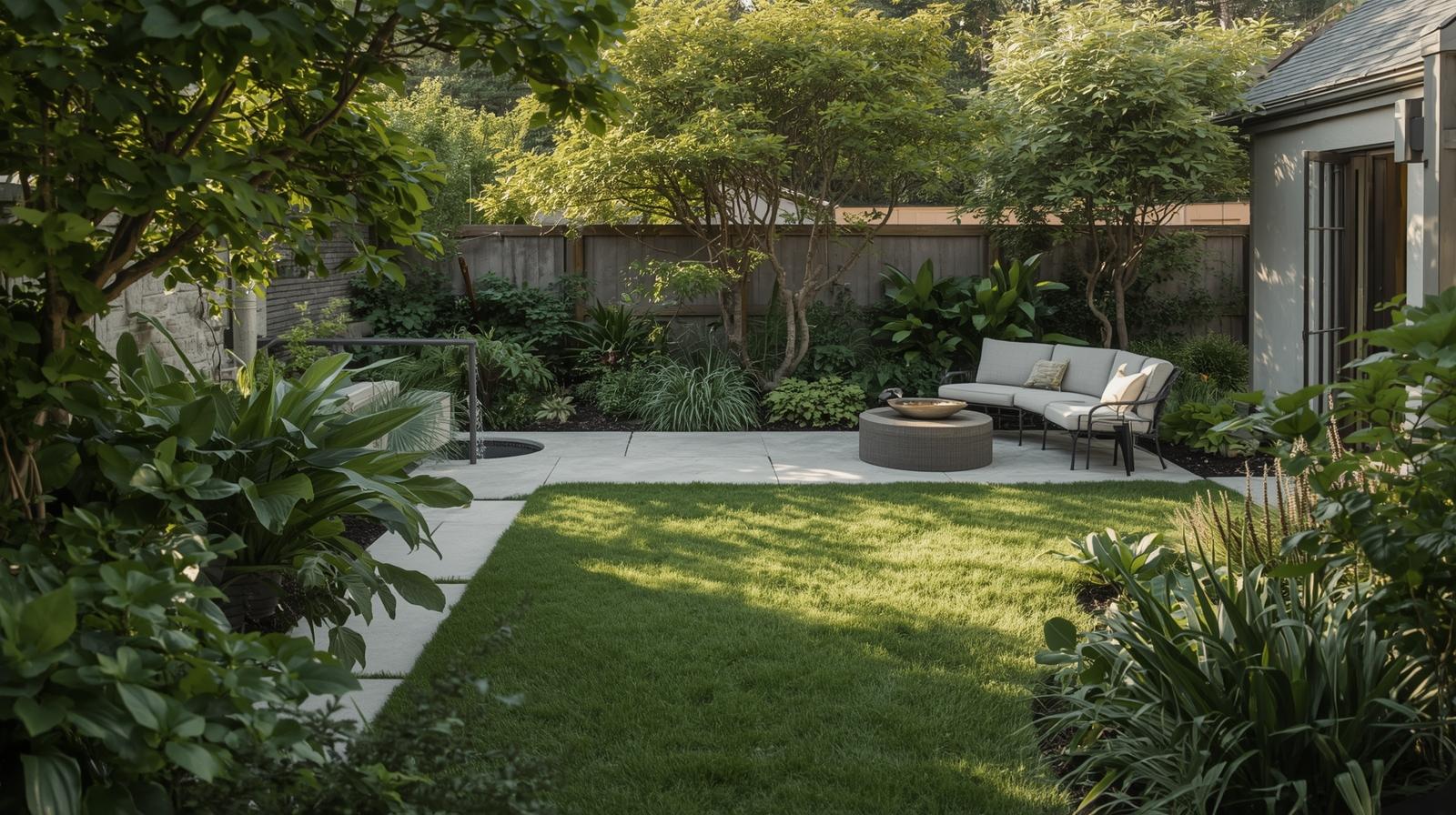
Prioritizing Your Wants vs. Needs
It’s easy to get carried away dreaming big and that’s okay! But distinguishing between what’s essential and what’s aspirational helps you build a plan that fits both your lifestyle and budget.
Create three lists:
- ✅ Must-Haves: Core elements that fulfill your functional needs (e.g., shaded seating, a play area for kids).
- 🌿 Nice-to-Haves: Features that enhance the experience but aren't essential (e.g., outdoor lighting, a fire pit).
- 🌟 Dream-Big Items: Luxury or long-term additions you can phase in over time (e.g., a plunge pool, outdoor kitchen).
💡 Expert Tip:
Start with a Master Plan. Even if you're breaking your project into stages, a cohesive master plan ensures your dream yard doesn’t end up feeling disjointed. Mapping everything out at the start helps you avoid tearing up completed work later just to install something new.
Backyard Style & Needs Quiz
Budgeting for Your Backyard Project
Once your vision is clear, it's time to talk numbers realistic, well-informed numbers. A beautiful backyard shouldn’t break the bank or derail your finances, but without a clear budget, that’s a real risk.
Understanding Typical Costs of Backyard Elements
Here’s a breakdown of average price ranges for common backyard components (note: actual costs will vary by region, size, and material choice):
|
Element |
Average Cost Range (USD) |
|
Hardscaping (patios, decks, paths) |
$15–$50 per sq. ft. |
|
Landscaping (plants, sod, trees) |
$4–$20 per sq. ft. |
|
Structures (pergolas, sheds) |
$2,000–$10,000+ |
|
Outdoor kitchens |
$5,000–$20,000+ |
|
Fire pits & water features |
$500–$5,000+ |
|
Lighting systems |
$1,000–$4,000 |
|
Permits & professional fees |
10–20% of project cost |
These are general industry averages that serve as a helpful baseline. Keep in mind, materials, labor rates, and local codes can all affect your final numbers.
Creating a Realistic Budget
Once you have a ballpark estimate, it’s time to build out a flexible, realistic budget.
- List each feature or element you want to include and research a range of expected costs.
- Add a 10–20% contingency fund for unexpected expenses because they will happen.
- Factor in financing options if needed. Personal loans, home equity lines, or even phased payments with contractors can ease the financial load.

Cost-Saving Strategies
Don’t let budget limitations stall your progress. With smart planning, you can make impactful changes without overspending:
- Phase your project over time (more on that below).
- Take on DIY-friendly tasks, like garden bed installation or staining decks.
- Shop sales at local nurseries or garden centers late season is a goldmine for plant deals.
- Use recycled or reclaimed materials for a rustic, eco-conscious aesthetic.
Reuse existing elements like stone paths, fencing, or even patio furniture.
💰 Backyard Budget Planner
Move the slider to set your budget and see which phases you can cover.
Your Budget: $15000
📐 Phase 1: Design & Permits → $500 – $3,000 ✅
🧱 Phase 2: Hardscaping → $4,000 – $15,000 ⚠️
🌱 Phase 3: Landscaping → $2,000 – $10,000 ❌
🏡 Phase 4: Structures & Features → $3,000 – $20,000+ ❌
The Backyard Planning Timeline: From Concept to Completion
Planning your dream backyard isn't just about choosing plants or pavers it's about understanding the full journey from idea to reality. Whether you’re DIY-ing parts of the project or working with professionals, having a clear timeline helps you manage expectations, avoid costly missteps, and stay on track.
Below is a structured view of the key project phases, each with a clear purpose, estimated duration, and practical considerations. This breakdown ensures that every stage builds on the last, resulting in a cohesive, functional, and beautiful space.
Backyard Project Phases
|
Phase |
Description |
Estimated Duration |
|
1. Vision & Needs Assessment |
Clarify how you want to use the space, who it’s for, and your overall goals. Define must-haves vs. nice-to-haves. |
1–2 weeks |
|
2. Budgeting & Initial Research |
Explore cost ranges, gather inspiration, and determine how much you’re comfortable spending. Set your financial boundaries. |
1 week |
|
3. Site Evaluation & Measurements |
Walk the space, take detailed measurements, assess sun/shade patterns, drainage, and existing features. |
1–3 days |
|
4. Design Development |
Work with a designer or use design software to create a layout plan. Include zones (dining, play, garden, etc.), materials, and plant selections. |
2–4 weeks |
|
5. Permits & Approvals |
Depending on your local regulations and project scope, submit permit applications for structures, fencing, or major landscaping. |
2–6 weeks (varies by region) |
|
6. Hiring Professionals (if needed) |
Research, interview, and hire contractors or specialists (e.g., electricians, landscapers, masons). |
1–2 weeks |
|
7. Site Preparation & Demolition |
Clear existing vegetation or structures, level the land, prep for new installations. |
1–2 weeks |
|
8. Hardscaping Installation |
Install patios, decks, walkways, retaining walls, or other structural elements. This sets the backbone of the space. |
2–6 weeks |
|
9. Softscaping & Planting |
Add plants, trees, sod, mulch, and garden beds. Timing matters here avoid extreme weather conditions for planting. |
1–2 weeks |
|
10. Structures & Features |
Build or install outdoor kitchens, pergolas, water features, lighting, or other final elements. |
2–4 weeks |
|
11. Final Touches & Clean-Up |
Style the space with furniture, decor, lighting adjustments, and last-minute fixes. Do a final walkthrough. |
3–5 days |
Why Having a Timeline Matters
Without a clear timeline, even the best ideas can unravel. A well-planned timeline helps you:
- Avoid delays due to poor sequencing (e.g., planting before hardscaping).
- Reduce stress by setting realistic expectations for each phase.
- Coordinate contractors more efficiently if you’re not doing it all yourself.
- Ensure seasonality works in your favor especially for planting and pouring concrete.
Expert Insight: Flexibility Is Key
While timelines help you stay organized, build in some flexibility. Weather delays, permit processing times, or contractor availability can all push dates around. The goal is not rigid perfection but rather a structured, adaptable path toward completion.
Backyard Design Principles & Layout Ideas
Designing your backyard isn’t just about what you include it’s about how everything works together. A thoughtful design creates a space that’s both beautiful and functional, tailored to how you live, relax, and entertain outdoors. In this section, we’ll explore essential backyard design principles and layout ideas that help turn your vision into a smart, cohesive plan.
Fundamental Design Concepts
To achieve a backyard that feels intentional and welcoming, it’s important to start with core design principles. These are the building blocks of a successful layout regardless of your style or budget.
1. Zoning
Divide your yard into functional zones based on how you plan to use the space. For example:
- Dining Area: Near the kitchen or grill, often with a table and overhead shade.
- Lounge Area: Comfortable seating around a fire pit or focal point.
- Play Zone: Open lawn or safe, soft surfaces for kids and pets.
- Utility/Storage Zone: Discreet placement of sheds, bins, or compost areas.
Zoning creates clarity and organization, helping every part of your yard serve a purpose.
2. Flow & Circulation
Design pathways and transitions between zones so the space feels connected and natural. Use pavers, stepping stones, or changes in material to guide movement while keeping zones distinct. Aim for unobstructed pathways that make the yard feel larger and more usable.
3. Focal Points
Introduce eye-catching features that add personality and structure. These could include:
- A dramatic sculpture or large planter
- A water feature like a fountain or pond
- A beautiful tree, with proper bark care, fire pit, or feature wall
Focal points draw the eye and help anchor the design visually.
4. Balance & Proportion
Balance doesn’t mean symmetry it means visual harmony. Ensure that no area feels too “heavy” or cluttered compared to others. Large elements should be proportionate to the space and offset with open areas or light landscaping.
5. Texture, Color, and Form
Incorporate variety to make your space visually interesting:
- Texture: Mix smooth stone with rough wood or leafy plants.
- Color: Use a cohesive palette with pops of accent color from furniture, flowers, or paint.
- Form: Mix upright plants with trailing vines or rounded shrubs for dynamic depth.
These elements enhance the ambiance and can influence mood calm and serene or vibrant and playful.
Expert Tip: Think About Lighting Early
Plan for both functional and mood lighting in your design phase. Adding fixtures later often involves costly rework. Consider:
- Path lights for safety
- String lights for ambiance
- Spotlights to highlight focal points or plants
Lighting can transform your backyard at night, extending its usability and adding drama.
Popular Backyard Layout Ideas & Styles
There’s no one-size-fits-all design. The best layout depends on your goals, household needs, and the size of your space. Here are some of the most popular layout concepts:
Entertainment Hub
Perfect for hosting gatherings, this layout includes:
- A large patio or deck
- Outdoor kitchen or grill station
- Ample seating arrangements
- A fire pit or fireplace
- Space for music or even a projector screen
Focus on durable materials, easy access to the house, and lighting for evening entertaining.
Family-Friendly Space
Ideal for households with kids or pets:
- Play structures or a sandbox
- Soft, open lawn space
- Raised or protected garden beds
- Smart storage for toys and quality garden tools, like a carbon steel set.
- A balance of shade and sun
Safety and durability are key opt for non-slip surfaces and low-maintenance plants.
Low-Maintenance Oasis
For those who want beauty without the upkeep:
- Drought-tolerant plants like succulents and ornamental grasses
- Gravel or stone pathways
- Synthetic turf or ground covers instead of lawn
- Self-watering planters and minimal irrigation zones
This style emphasizes efficiency and sustainability while still looking polished.
Edible Garden / Urban Homestead
Combine beauty with function in a food-focused backyard:
- Raised vegetable beds
- Fruit trees or berry shrubs
- A composting area
- Space for rainwater collection
- Herb spirals or vertical planters
This setup promotes sustainable living and can be both productive and visually appealing.
Zen Retreat
For calm and reflection, a minimalist layout with:
- Simple lines and uncluttered planting
- Water features like a fountain or small pond
- Natural materials stone, bamboo, wood
- Native or slow-growing plants
- Quiet seating or a meditation area
The focus is on serenity, privacy, and connection to nature.
The Future-Proof Backyard
Design your space to adapt to future needs, climate realities, and smart home technology:
- Use resilient, drought-tolerant plant species
- Include permeable pavers or rain gardens to manage stormwater
- Add smart lighting or irrigation systems
- Consider solar-powered features or EV charging areas
Planning with longevity in mind means fewer upgrades later and a more sustainable footprint.
Expert Tip: Utilize Vertical Space
Especially important in smaller yards, vertical elements can:
- Add privacy (e.g., lattice or green walls)
- Create shaded zones
- Support climbing plants
- Add layers of interest without taking up valuable square footage
Trellises, pergolas, or vertical gardens are functional and stylish, helping you maximize space.
DIY vs. Professional: When to Hire Help
As exciting as a backyard makeover can be, one of the most critical decisions you’ll face is what to do yourself and where to bring in the pros. Choosing the right approach for each task can save you money, time, and a whole lot of frustration. But make the wrong call, and you could end up facing expensive repairs or even safety risks.
Let’s walk through how to evaluate your options wisely.
Assessing Your Skills, Time & Budget
Every backyard project is different, and so is every homeowner’s comfort level with tools, timelines, and technical challenges. Start by honestly assessing:
- Your skill set (basic carpentry? gardening with a patio weeder? power tool experience?)
- How much free time you can commit to the project
- Your budget, including any flexibility for outsourcing
Use these questions to break your to-do list into two categories: DIY-friendly tasks and pro-level jobs.
DIY-Suitable Tasks
If you’re handy or willing to learn, perhaps with gardening gloves, these tasks are generally safe and achievable:
- Planting trees, like ficus tree care, shrubs, and flowers
- Assembling furniture or planters
- Painting fences or garden features
- Installing mulch or garden borders
- Setting up basic irrigation (e.g., soaker hoses or drip systems)
Professional-Only Tasks
Certain jobs require experience, equipment, and permits, and are best left to licensed pros:
- Structural hardscaping (retaining walls, large patios, decks)
- Drainage or grading work
- Plumbing for outdoor sinks, kitchens, or fountains
- Electrical work (lighting, outlets, hot tubs)
- Tree removal or trimming near power lines
Anything requiring city permits or inspections
Pros & Cons of DIY
- Cost savings: Labor costs can eat up a big chunk of your budget.
- Personal satisfaction: There's pride in building something with your own hands.
- Flexible timeline: Work at your own pace (within reason!).
- Time-consuming: Weekend projects often spill into months.
- Steep learning curves: Mistakes can be costly both in money and time.
- Tools required: May need to buy or rent specialized equipment.
- Safety hazards: Power tools, electricity, and heavy lifting pose risks.
Safety First
Always follow safety protocols and manufacturer instructions for tools and materials. Wear protective gear, and never attempt electrical or structural work without the necessary knowledge and permits. Resources like the National Association of Landscape Professionals (NALP) and DIY Network offer safety guides worth reviewing before getting started.
Pros & Cons of Hiring Professionals
- Expertise & efficiency: Trained professionals know how to get the job done right and quickly.
- Access to tools & resources: Specialized tools and materials are often included in the quote.
- Permit handling: They understand local regulations and can manage permits and inspections
- Peace of mind: Quality craftsmanship and warranties often come standard.
- Higher upfront cost: Professional labor can significantly increase your project budget
- Scheduling constraints: You’ll need to work around their availability.
- Less hands-on control: You’ll have to clearly communicate your vision and preferences.
Key Decision-Making Factors
Before making the call to DIY or outsource, consider the following:
|
Factor |
DIY |
Hire a Professional |
|
Project complexity |
Simple tasks, low risk |
Structural, technical, or regulated |
|
Tools needed |
Basic hand tools |
Specialized or expensive tools |
|
Time available |
Flexible schedules |
Tight timelines |
|
Safety concerns |
Low-risk jobs |
High-risk tasks |
|
Permits required |
Unlikely |
Often required |
|
Personal comfort level |
Willing to learn, hands-on |
Prefer expertise and guarantees |
If you're still on the fence, start small: tackle one DIY-friendly area first (like planting or painting) and see how it goes. That experience will give you confidence or clarity that it's time to call in a pro.
How to Choose a Reputable Professional
When hiring outside help, quality and reliability matter. Don't just pick the cheapest quote. Take time to evaluate your options:
- ✅ Check licenses & insurance: Make sure contractors are licensed and carry liability insurance.
- ✅ Ask for references: A trustworthy pro should offer names of satisfied clients.
- ✅ Review portfolios & past work: Look for alignment with your style and project goals.
- ✅ Get multiple bids: Compare apples to apples each quote should detail materials, labor, timeline, and guarantees.
- ✅ Read reviews: Look up testimonials online and check Better Business Bureau ratings.
Essential Backyard Elements & Features
A well-designed backyard blends function, beauty, and comfort. Selecting the right features and planning them with purpose ensures your space remains inviting, safe, and easy to maintain for years to come. Below is a breakdown of essential backyard elements, along with design insights, material considerations, and expert tips.
Patios & Decks
Material Choices:
- Concrete: Durable and versatile; can be stamped or stained for texture.
- Pavers: Modular, easy to repair, and available in varied shapes and colors.
- Natural Stone: Premium, elegant appearance but higher cost.
- Wood: Warm and classic, requires maintenance to prevent rot.
- Composite: Low maintenance and long-lasting, but can get hot in direct sun.
Design Considerations:
- Size & Shape: Ensure enough space for furniture, walking clearance, and future add-ons.
- Elevation: Consider steps, railings, or retaining walls for sloped yards.
- Integration: Align with your home’s architecture and sightlines for seamless indoor-outdoor flow.
💡 Expert Tip:
Invest in Quality Foundation Materials. A solid base (gravel, sand, compacted soil) ensures patios, decks, and retaining walls stay level, safe, and crack-free over time.
Pergolas & Gazebos
Adding shade and vertical structure creates depth and comfort in your backyard.
Material Options:
- Wood: Warm, customizable, but requires sealing.
- Metal: Sleek and durable, low maintenance.
- Vinyl: Long-lasting and weather-resistant.
Design Benefits:
- Creates defined zones (dining, lounge)
- Supports hanging plants or lighting
- Adds visual height and architectural interest
💡 Expert Tip:
Utilize Vertical Space. Trellises, pergolas, or climbing vines can enhance privacy and add lush greenery without eating up ground space.
Water Features
Types:
- Fountains: Compact and easy to maintain.
- Ponds: Creates a natural habitat for fish and plants.
- Waterfalls: Adds sound and movement.
- Bird Baths: Low-cost and wildlife-friendly.
Benefits:
- Calming sound and ambiance
- Attracts birds and pollinators
- Becomes a natural focal point
Maintenance:
Consider filters, pumps, and regular cleaning to prevent algae buildup.
Fire Pits & Outdoor Fireplaces
Types:
- Wood-burning: Traditional, cozy, affordable, but requires ash cleanup.
- Gas: Cleaner burn, instant control, higher installation cost.
- Portable: Flexible placement and budget-friendly.
Safety & Placement:
- Position away from overhanging trees or flammable structures.
- Use fireproof surfaces and maintain a safe clearance area.
- Check local fire codes or permit requirements.
Planting Beds & Gardens
Designing with Layers:
- Trees: Provide structure, shade, and long-term growth.
- Shrubs: Medium-height filler between trees and ground plants.
- Perennials: Add consistent seasonal color.
- Groundcovers: Fill empty space, control erosion, reduce weeds.
Plant Selection Tips:
- Match plants to your climate and soil type.
- Factor in sun, shade, and moisture variations even within the same yard.
💡 Expert Tip:
Consider Microclimates. Areas near walls, fences, or slopes may be hotter, drier, or more sheltered than the rest of the yard choose plants accordingly.
💡 Expert Tip:
“Test Drive” Materials & Plants. Borrow samples of pavers, stones, or decking and view them in different light conditions. Visit local nurseries to see mature versions of plants before investing.
Outdoor Kitchens & Dining Areas
Key Components:
- Grill or smoker
- Counter space for prep
- Sink and refrigerator for convenience
- Cabinets or weather-resistant storage
Layout Considerations:
- Proximity to indoor kitchen for easy access
- Ventilation and fire safety around enclosed structures
- Shaded seating areas for comfort
Lighting
Types of Lighting:
- Accent: Highlights plants, walls, or water features.
- Task: Provides focused light for cooking or workspaces.
- Safety: Illuminates steps, edges, and walkways.
- Ambient: Sets mood and overall atmosphere.
Power Options:
- Low-voltage systems: Energy-efficient, customizable.
- Solar lights: Easy to install, cost-effective for small areas.
💡 Expert Tip:
Plan Lighting Early. Installing conduit and wiring during initial construction prevents expensive retrofits later.
Pathways & Walkways
Materials:
- Pavers, flagstone, gravel, brick, or concrete.
Design Notes:
- Choose widths based on traffic 3 feet is minimum for comfort.
- Use curves for natural flow or straight paths for modern design.
- Add lighting for evening visibility.
Privacy Solutions
Creating intimacy in your backyard can be both practical and aesthetic:
- Fencing: Traditional, secure, and varied in style.
- Hedges: Living walls that soften boundaries.
- Privacy Screens: Movable panels or lattice.
- Strategic Planting: Layered trees and shrubs to block sightlines without closing off the space.
Permits, Regulations & HOA Compliance
Even the most exciting backyard plans can grind to a halt if you overlook one critical step: regulatory compliance. Local building codes, zoning laws, and HOA rules aren’t just red tape they exist to ensure safety, maintain neighborhood standards, and protect property values. Understanding these requirements early can save you from costly fines, forced changes, or even having to tear down completed work.
Understanding Local Building Codes & Zoning Laws
Most outdoor projects fall under your city or county’s jurisdiction. Depending on your location, permits may be required for:
- Decks or elevated platforms
- Large sheds or outbuildings
- Significant grading or drainage modifications
- Retaining walls above a certain height
- Electrical work (lighting, outlets, hot tubs)
- Plumbing installations (outdoor sinks, kitchens, irrigation systems)
- Fences or privacy walls above regulated heights
Why this matters:
Starting work without permits can lead to stop-work orders, penalties, and expensive retrofits to bring your project up to code. In extreme cases, you might be forced to remove unapproved structures altogether.
Navigating Homeowners’ Association (HOA) Guidelines
If your property is part of an HOA, your project likely needs to comply with additional rules outlined in your CC&Rs (Covenants, Conditions, and Restrictions).
Typical HOA requirements include:
- Restrictions on fencing height and materials
- Approved paint colors, siding, or roofing materials
- Limits on outbuilding size and location
- Rules about tree removal, landscape changes, or exterior lighting
Many HOAs require architectural review approval before work begins. Ignoring this step can result in fines, project delays, or mandated changes.
Steps to Ensure Compliance
- Research your local codes and HOA rules first.
- Visit your city or county planning department website for clear permit requirements.
- Download relevant HOA guidelines or contact your management office for clarification.
- Visit your city or county planning department website for clear permit requirements.
- Consult a licensed contractor or architect.
- Professionals are often well-versed in local regulations and can help ensure your plans meet all requirements.
- Professionals are often well-versed in local regulations and can help ensure your plans meet all requirements.
- Submit plans for approval before breaking ground.
- Whether to your HOA, city, or both, submitting detailed drawings up front prevents rejection or forced revisions later.
- Whether to your HOA, city, or both, submitting detailed drawings up front prevents rejection or forced revisions later.
- Schedule required inspections.
- Some permits require interim or final inspections to confirm work meets safety and structural standards.
- Some permits require interim or final inspections to confirm work meets safety and structural standards.
Expert Tip: Review Local Regulations First
Don’t rely on assumptions or outdated advice from neighbors or online forums. Codes and HOA rules change frequently. Always get information directly from:
- Official municipal websites (city or county building departments)
- Reputable industry associations such as the National Association of Home Builders (NAHB) or American Society of Landscape Architects (ASLA)
- Your HOA’s official documents and board representatives
Taking these proactive steps ensures your project starts and finishes smoothly, without unexpected roadblocks.
Maintenance & Long-Term Care Considerations
A beautifully designed backyard is only as enjoyable as it is maintainable. Without thoughtful planning, even the most stunning outdoor space can become burdensome. Whether you’re a weekend gardener preparing for spring or prefer a more hands-off approach, designing for low-maintenance and planning for long-term care ensures your outdoor investment stays vibrant and functional for years to come.
Designing for Low-Maintenance
- Choose Durable, Low-Upkeep Materials
Opt for materials that resist wear, weather, and pests. For example:
- Composite decking lasts longer than natural wood and requires no staining or sealing.
- Permeable pavers help with drainage while minimizing weed growth.
- Powder-coated metals and vinyl fencing offer lasting strength with minimal upkeep.
- Select Native or Drought-Tolerant Plants
Native species are naturally adapted to your local climate and soil, requiring less water, fewer fertilizers, and minimal pest control. Drought-tolerant options like lavender, yarrow, and ornamental grasses can reduce your irrigation needs while adding color and texture. - Minimize Lawn Areas or Use Artificial Turf
Lawns are high-maintenance and water-hungry. If you enjoy green space but not the upkeep, reduce lawn size or replace it with synthetic turf or groundcovers like creeping thyme or clover. - Install Automated Irrigation Systems
Smart irrigation saves time and water. Drip systems, moisture sensors, and programmable timers help maintain optimal watering schedules without manual oversight.
Expert Tip: Factor in Maintenance
Be honest about how much time, energy, and budget you’re willing to invest in upkeep. Choosing low-maintenance options now can lead to long-term savings and ongoing enjoyment without added stress.
Ongoing Care for Your Dream Backyard
Creating a sustainable maintenance routine protects both the beauty and function of your backyard.
- Watering & Irrigation Best Practices
Even with smart irrigation, monitor for overwatering or under-watering. Group plants with similar water needs together (a technique called hydrozoning) to maximize efficiency. - Pruning, Fertilizing & Pest Management
Seasonal pruning, including specific tree pruning techniques, ensures healthy plant growth and aesthetic appeal.Use organic fertilizers and natural pest deterrents to minimize chemical use while supporting local ecosystems. - Hardscape Cleaning & Sealing
Maintain patios, decks, and walkways by:
- Power-washing annually to remove dirt and algae.
- Sealing stone or wood surfaces every few years to prevent cracking and weather damage.
- Winterizing Features
If you live in a cold climate, protect:
- Water features by draining and covering them.
- Irrigation lines with blowouts or insulation.
- Outdoor furniture and kitchens with covers or storage.
The Future-Proof Backyard: Sustainable Design & Smart Integration
As weather patterns shift and technology advances, designing with future conditions in mind is no longer optional it’s essential.
- Embrace Sustainable Landscaping
- Use eco-friendly materials like reclaimed wood or recycled pavers.
- Install permeable surfaces to reduce runoff and promote groundwater recharge.
- Incorporate rain gardens or rainwater harvesting systems to manage stormwater naturally.
- Choose Resilient, Climate-Appropriate Plants
Focus on biodiversity, soil health, and plant resilience. Native pollinator-friendly plants support wildlife while withstanding temperature extremes and water scarcity. - Integrate Smart Technology for Efficiency
- Smart irrigation controllers adjust watering based on weather forecasts.
- Automated lighting systems enhance security and ambiance while conserving energy.
- Outdoor sensors can monitor soil moisture, temperature, and light levels for optimal plant care.
Unique Angle: A well-maintained backyard is not just easier to manage it’s more sustainable, resilient, and cost-effective. Planning for climate adaptability and tech integration today ensures your outdoor space thrives tomorrow.
Your Dream Backyard Planning Checklist
Transforming your backyard from idea to reality can feel overwhelming, but breaking the project into phases ensures clarity, efficiency, and fewer surprises. Below is a comprehensive checklist that guides you through each stage complete with common pitfalls and practical solutions to keep your project on track.
Phase 1: Vision & Planning
- Define your backyard vision and needs.
- Create a “Must-Have” vs. “Nice-to-Have” list.
- Research design styles and gather inspiration from magazines, Pinterest, or local gardens.
- Draft a preliminary budget that includes a contingency fund (10–20%).
Common Pitfall:
Not having a clear plan leads to scope creep and budget overruns.
Solution: Prioritize features and stick to your list of essentials.
Phase 2: Design & Documentation
- Sketch out design ideas and layouts even rough drawings help visualize zones and flow.
- Select materials and plant palette early to ensure availability and consistency.
- Finalize your budget and get multiple quotes for key elements.
- Check local zoning laws, building codes, and HOA regulations.
- Apply for necessary permits before any construction begins.
Common Pitfall:
Skipping permit checks can lead to fines or forced removal of unapproved work.
Solution: Contact your city’s planning department and HOA for up-to-date regulations.
Phase 3: Site Preparation
- Clear existing debris and vegetation.
- Complete any necessary grading or leveling for drainage and proper foundation.
- Install drainage systems to prevent water pooling and erosion.
- Run electrical and plumbing lines for lighting, irrigation, and outdoor kitchens.
Common Pitfall:
Neglecting drainage planning causes long-term water damage.
Solution: Consult with a contractor or landscape architect to ensure proper slope and runoff management.
Phase 4: Hardscaping & Structures
- Install patios, decks, and pathways.
- Construct pergolas, gazebos, or shade structures.
- Build water features or fire pits.
Common Pitfall:
Cutting corners on base preparation leads to cracks or uneven settling.
Solution: Invest in quality foundation materials and compaction techniques.
Phase 5: Planting & Softscaping
- Install irrigation systems for efficient watering.
- Plant trees, shrubs, and flowers based on climate and microclimates.
- Lay sod or incorporate groundcover.
- Apply mulch to planting beds to retain moisture and prevent weeds.
Common Pitfall:
Planting without considering mature size leads to overcrowding.
Solution: Check growth charts and space accordingly.
Phase 6: Finishing Touches
- Install outdoor lighting for safety and ambiance.
- Place outdoor furniture and decor to complete the look.
- Conduct a final clean-up and project review to ensure everything functions as planned.
Common Pitfall:
Installing lighting last without pre-planning requires expensive rewiring.
Solution: Integrate lighting plans early in the design phase.
Expert Tip: Prioritize Drainage
Proper water management is crucial for protecting your backyard’s foundation, plant health, and longevity. Address drainage at the beginning to prevent costly repairs later.
Essential Tools & Resources for Your Backyard Project
No successful backyard transformation happens without the right tools in hand. Whether you're managing the project yourself or working alongside professionals, having access to the right software, gear, and equipment will streamline your process, improve accuracy, and enhance safety.
Here’s a roundup of must-have tools and resources, along with expert insights on how each one contributes to a smoother, smarter backyard makeover.
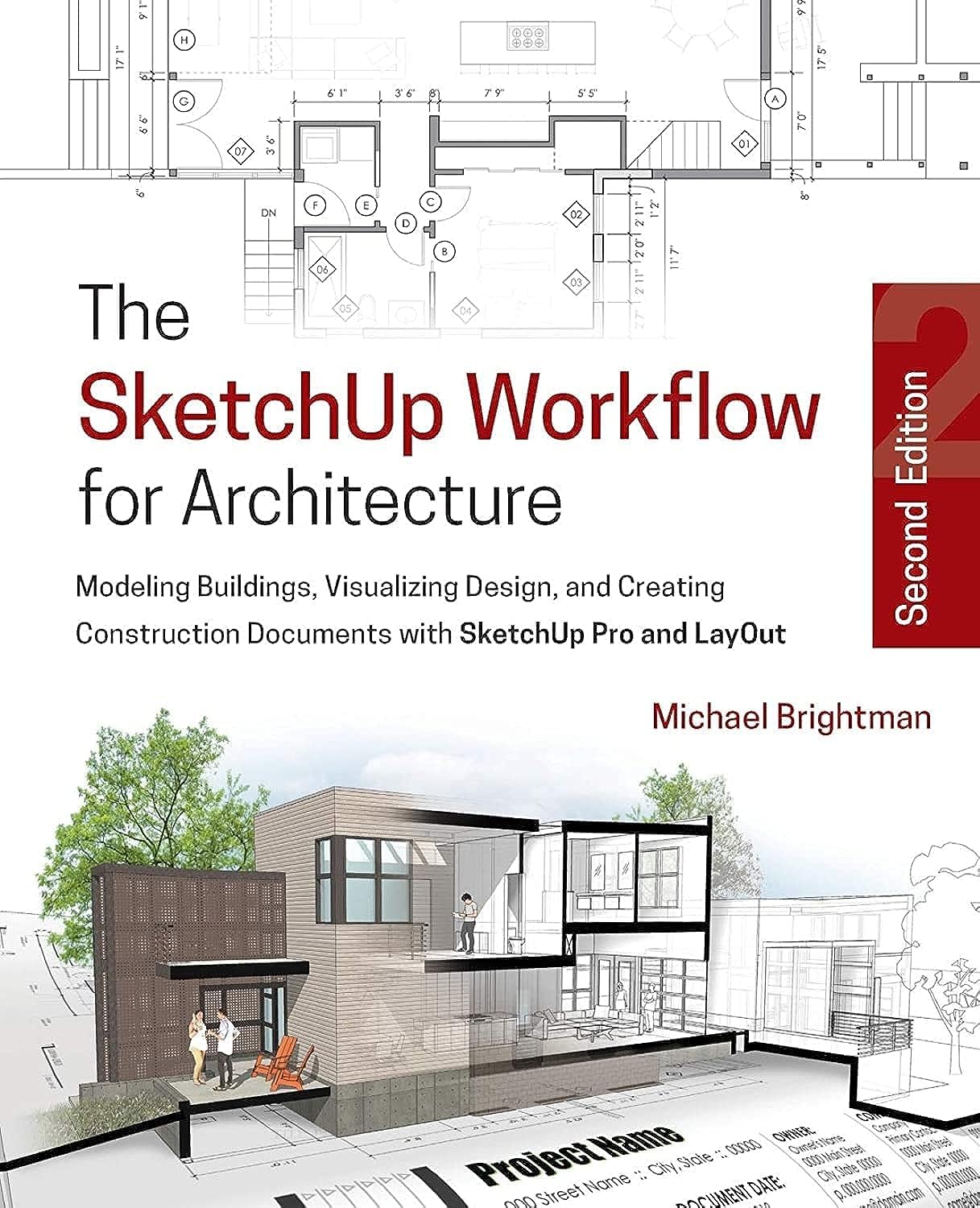
The SketchUp Workflow for Architecture
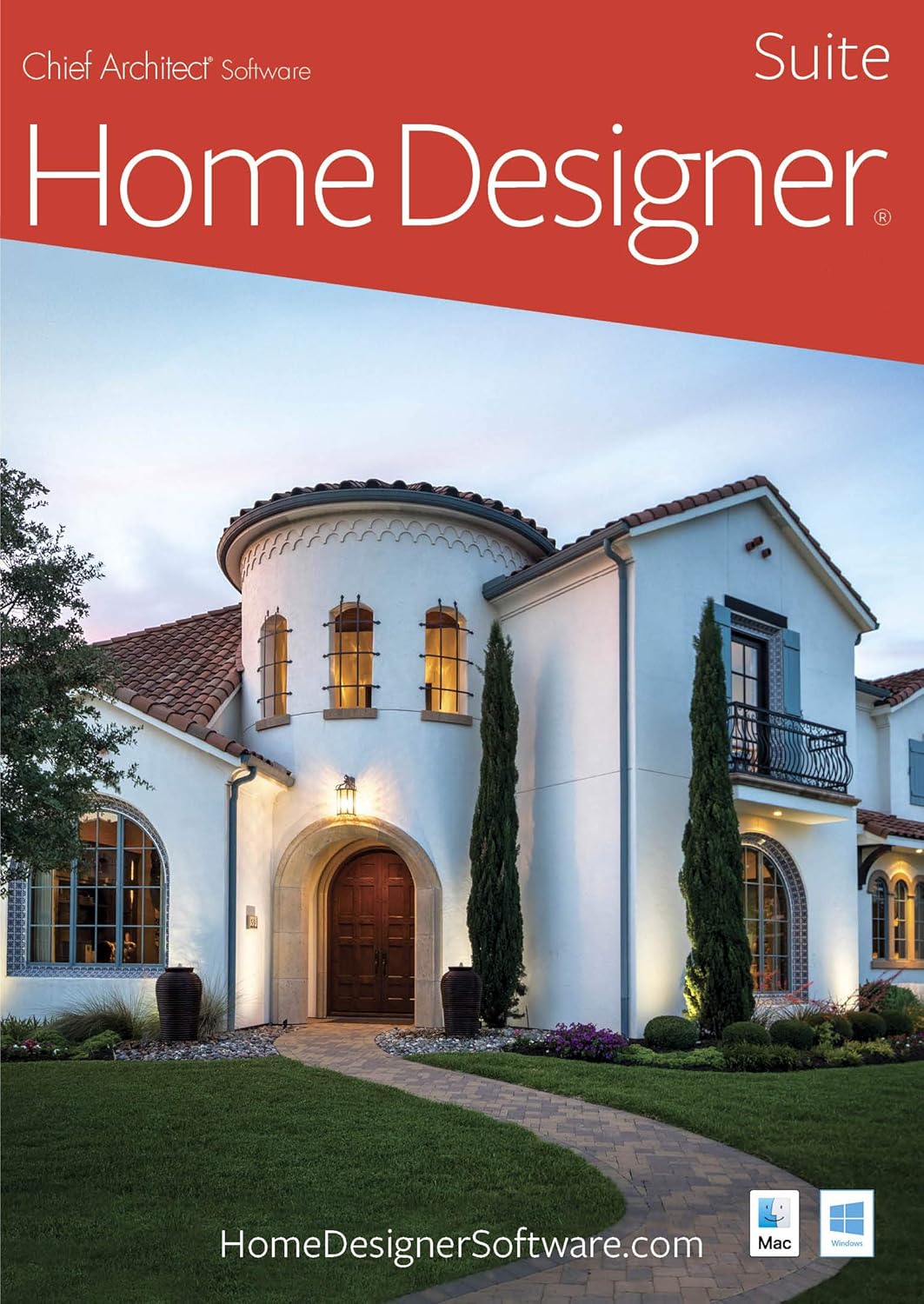
Home Designer Suite – PC Download
Ideal for remodeling, interior design, kitchens, baths, landscaping, and more.
✅ Design in 2D & 3D
✅ 6,000+ library items & templates
✅ Virtual tours & realistic 3D views
✅ Smart tools for decks, patios, and plants (3,600+ options)
✅ Step-by-step video tutorials included
💻 Platform: PC & Mac | ⭐ 3.8/5 | #1 Best Seller in Home Design
💲 $129.99 (Instant $80 off with Amazon Store Card)
Why It Matters:
These intuitive landscape design tools help you visualize your dream backyard before committing time or money. You can experiment with layouts, adjust dimensions, add plantings or structures, and even simulate how shadows fall during different times of day.
Benefit:
- Make smarter design choices.
- Communicate clearly with contractors.
- Avoid costly design missteps.
Screenshot Suggestion:
Show the interface of SketchUp or iScape with a sample backyard layout in 3D.
🧤 Basic Gardening Hand Tools
Product Recommendation:
- Ergonomic pruners, trowels, hand forks, garden gloves with reinforced fingertips
Why It Matters:
Whether you're planting a new bed, maintaining established gardens, or trimming back overgrowth, quality hand tools are essential.
Benefit:
- Improve planting precision.
- Reduce fatigue and strain.
- Keep your hands protected and productive.
Expert Tip:
Opt for tools with ergonomic handles and stainless steel blades they last longer and are easier on your wrists.
🛠️ Basic DIY Construction Tools
Product Recommendation:
- Cordless drill/driver, measuring tape, level, rubber mallet, circular saw (if advanced)
Why It Matters:
If your project involves assembling pergolas, installing raised beds, or setting pavers, basic construction tools are your best friend.
Benefit:
- Ensure level, stable structures.
- Speed up construction time.
- Save money on hiring for minor tasks.
Pro Tip:
Invest in a quality cordless drill and a long tape measure you’ll use them throughout nearly every phase of your project.
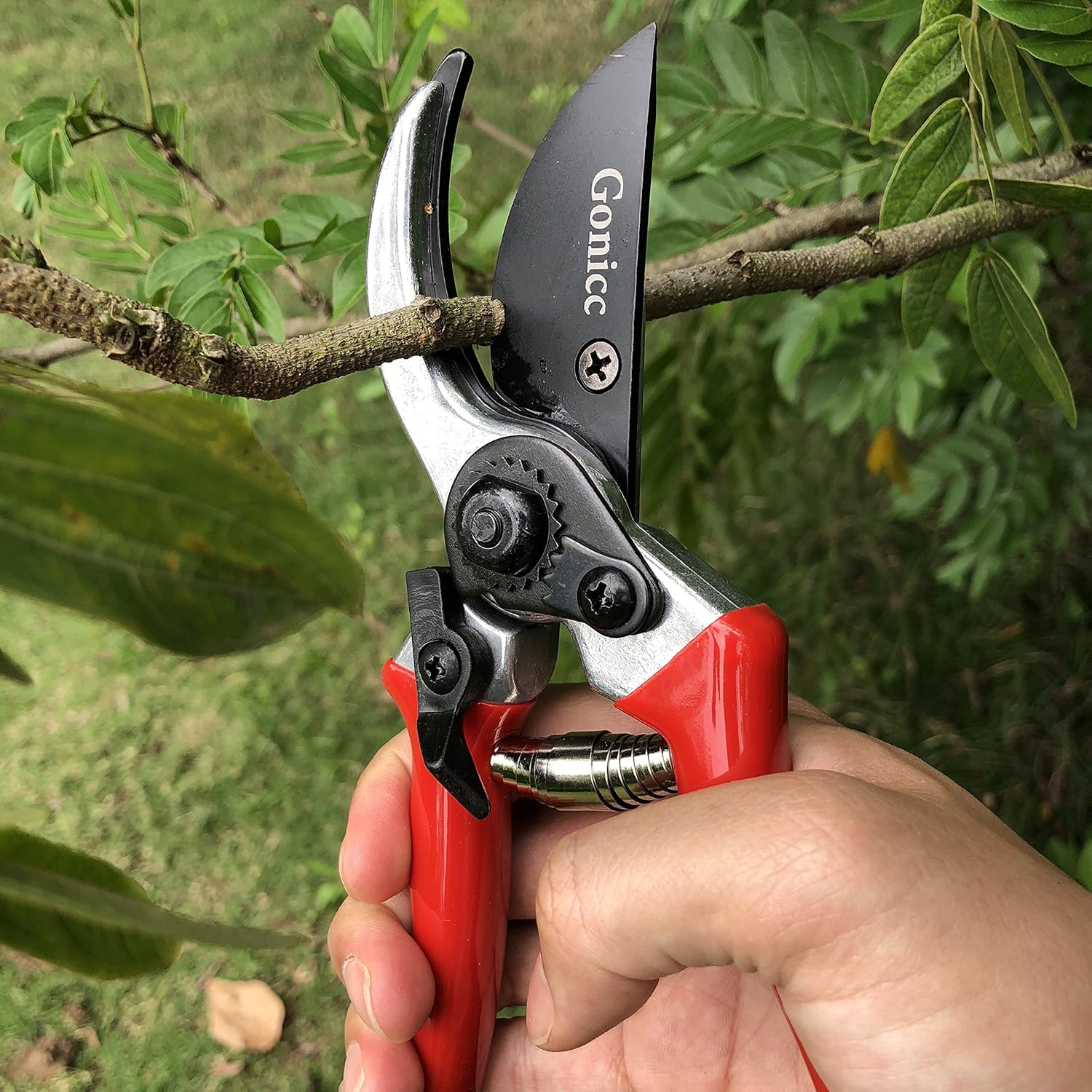
gonicc 8" Professional Pruning Shears (GPPS-1002)
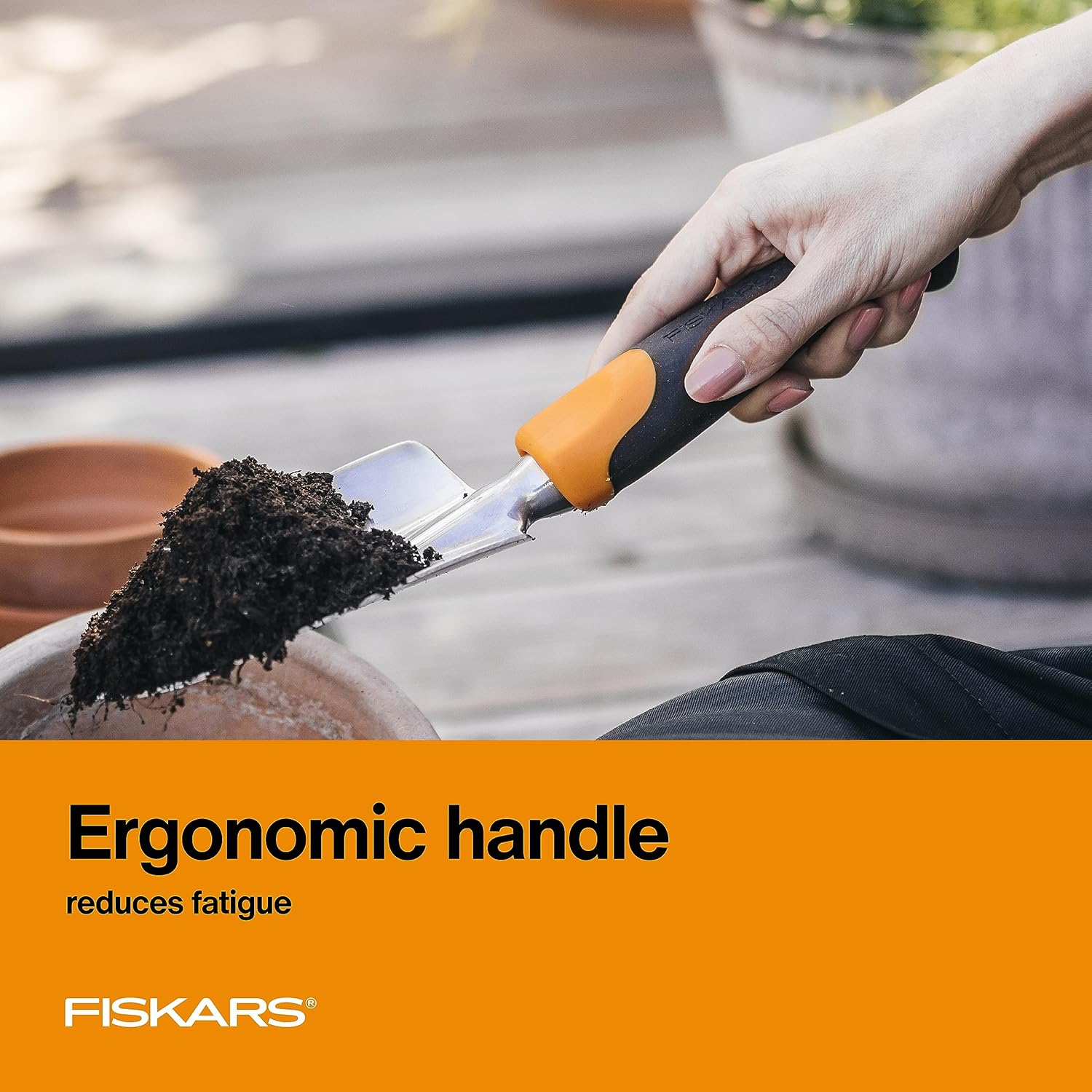
Fiskars Ergo Garden Trowel
Safety Gear
Product Recommendation:
- Work gloves, safety glasses, knee pads, ear protection
Why It Matters:
Backyard work involves sharp tools, power equipment, and often, long hours in physically demanding conditions.
Benefit:
- Prevent injuries and fatigue.
- Stay safe when cutting, drilling, or lifting.
- Work more comfortably on hard surfaces.
E-E-A-T Note:
Always prioritize safety. Even experienced DIYers should wear proper gear during any manual or mechanical task.
🧪 Soil Testing Kits
Product Recommendation:
- DIY soil pH and nutrient testing kits or digital soil testers
Why It Matters:
Your soil’s condition directly affects plant health. A quick test reveals pH levels and key nutrients (like nitrogen or phosphorus), helping you choose the right soil amendments or plants.
Benefit:
- Avoid plant failure.
- Improve garden health and growth.
- Tailor fertilization accurately.
Expert Tip:
Retest your soil every 1–2 years, especially if you’re making major planting changes.
💡 Outdoor Lighting Kits
Product Recommendation:
- Solar path lights, low-voltage LED landscape lighting, motion-activated security lights
Why It Matters:
Lighting enhances both ambience and functionality, extending your backyard's usability into the evening and adding a sense of security.
Benefit:
- Highlight landscaping or pathways.
- Increase safety around steps or patios.
- Create mood lighting for entertaining.
Pro Tip:
Look for smart lighting systems that can be controlled via mobile app or integrated into your existing smart home network.
🔊 Outdoor Entertainment Systems
Product Recommendation:
- Weatherproof Bluetooth speakers, portable projectors, or all-in-one outdoor audio setups
Why It Matters:
Set the tone for gatherings or solo relaxation with quality sound and visuals without risking damage to your indoor gear.
Benefit:
- Enhance the atmosphere during cookouts or parties.
- Enjoy background music while gardening or reading.
- Turn your yard into an outdoor theater.
Conclusion & Next Steps
A well-designed backyard isn’t built in a weekend it’s the result of thoughtful planning, strategic execution, and future-minded decisions. Throughout this guide, we’ve walked through every stage of the transformation process, from forming your initial vision to choosing tools, navigating permits, and planning for long-term maintenance.
🔑 Key Takeaways
- Clarity of Vision is the foundation understand your lifestyle needs, aesthetic preferences, and long-term goals before breaking ground.
- Budgeting & Design go hand in hand balancing creativity with cost ensures a practical yet beautiful outcome.
- Compliance Matters permits, regulations, and HOA guidelines may not be glamorous, but they're essential to avoid delays and costly mistakes.
- Sustainability & Maintenance choosing low-maintenance, eco-friendly solutions pays off in both convenience and long-term value.
🌿 Take the First Step
Big changes start small. Whether you're sketching ideas on a napkin or comparing native plant palettes online, every small action brings you closer to the backyard you’ve been dreaming of. Don't wait for the perfect time start now with what you have.
🌎 Future-Proof Your Outdoor Space
Design with the future in mind. As climate considerations, technology, and lifestyle needs evolve, so should your backyard. Integrating smart systems, sustainable materials, and adaptable layouts ensures your space remains enjoyable and functional for years to come.
✅ Ready to break ground on your dream backyard?
Start by defining your vision using our interactive quiz, then use this comprehensive guide as your trusted companion through every phase from idea to installation.
Your dream backyard isn’t just a destination.
It’s a journey and now, you’re ready to take the first step.

